Comments / Questions (7)
![]() GISELE AUBUT wrote:
GISELE AUBUT wrote:
Bonjour, Ma question porte aussi sur A.1 et A.2 Si je comprends bien, A.1 est seulement utilisé dans le col en alternance avec A.2 puis A.2 est utilisé pour les raglans par la suite? Merci.
28.03.2025 - 04:49DROPS Design answered:
Bonjour Mme Aubut, pas exactement, vous tricotez A.1 sur le col, puis, quand les 4 rangs de A.1 sont terminés, vous tricotez A.2 au lieu de A.1 - le diagramme A.1 n'es tricoté qu'une seule fois, au tout début du col. Mais ensuite, oui, vous répétez A.2 tout du long. Bon tricot!
28.03.2025 - 08:19
![]() Engel wrote:
Engel wrote:
Bij maat xl lijkt het aantal steken op de voorpanden voor de boord niet te kloppen. Tussen voorbies en A2 staan, na de meerderingen, 59 steken op de naald. Met een boordsteek van 2 re;2 av hou je 3 steken over niet 2.
16.03.2025 - 19:51
![]() Laura Slotboom wrote:
Laura Slotboom wrote:
Het patroon klopt niet in maat L. Na de pas heb je 214 steken op de pen dan 14 x meerderen voor de mouw = 14 x4 = 56 en 28 x voor voorpanden en rug 28 × 4 = 112 dus totaal 214 + 56 + 112 = 382 en geen 326. Of doe ik iets fout?
08.03.2025 - 16:23
![]() Leena Wahlberg wrote:
Leena Wahlberg wrote:
Hej, Halskant: i mönstret står att 6+8+2 räta maskor i början medan varvet slutas med 8+2 räta+6maskor. Ska det inte vara 2 räta +8+6 maskor i slutet på första varvet? Annars kanterna inte lika eller tänker jag fel?
04.02.2025 - 19:53DROPS Design answered:
Hej Leena. Halskanten börjar med 6 framkantsmaskor med i-cord, sedan 2 rm, 2 am, 2 rm, 2 am, 2 rm, A.1 och varvet slutar med A.1, 2 rm, 2 am, 2 rm, 2 am, 2 rm och till sist 6 framkantsmaskor med i-cord, så kanterna kommer bli lika. Mvh DROPS Design
05.02.2025 - 14:11
![]() Edith wrote:
Edith wrote:
Bonjour, Après le deuxième rang (endroit) du col, comment faut il tricoter le troisième rang ? Tout à l'envers ? Mais alors les côtes 2 - 2 ne se forment pas. Faut il tricoter les mailles comme elles se présentent ? Faut il déjà commencer avec A2 ??? Merci de préciser.
11.11.2024 - 15:57DROPS Design answered:
Bonjour Edith, sur l'envers, tricotez les mailles comme elles se présentent: les mailles point mousse au point mousse (avec la bordure I-cord), les mailles envers à l'envers, les mailles endroit à l'endroit et lisez les rangs envers de gauche à droite (soit 2 m end, 2 m env, 1 m end, 2 m env, 2 m end) pour A.1 (A.2 se tricote ensuite pareil plus tard = les torsades ne se font que sur l'endroit). Bon tricot!
11.11.2024 - 16:18
![]() Annette Holmstrøm wrote:
Annette Holmstrøm wrote:
Der er uoverensstemmelser i beskrivelsen fra start - str L slå 134 m op del op… 6 m til i-ccord (her mangler beskrivelse at 2 ret m) , der efter 8 m, 2 r, 20 m, 2 r, 20 m, 2r, 20m, 2r, 20m, 2 r, 8m, 2 r, 6 m i-cord … Det giver 100 m … så er der langt op til 134 masker der skal slås op….. Hvad er løsningen….
02.10.2024 - 22:48DROPS Design answered:
Hei Annette. Nei, mangler ikke 2 rett m i begynnelsen. Ser ut som du har glemt å telle maskene i A.1 (=9 masker x 4 = 36 masker). Det strikkes slik: 6 stolpemasker + 8 m + 2 m + A.1 (9 m) + 20 m + 2 m + A.1 (9 m) + 20 m + 2 m + A.1 (9 m) + 20 m + 2 m + A.1 (9 m) + 8 m + 2 m + 6 stolpemasker = 134 masker. mvh DROPS Design
15.10.2024 - 10:20
![]() Helle wrote:
Helle wrote:
Skovtræ
10.08.2024 - 13:07
Under the Oak Cardigan#undertheoakcardigan |
|||||||||||||
 |
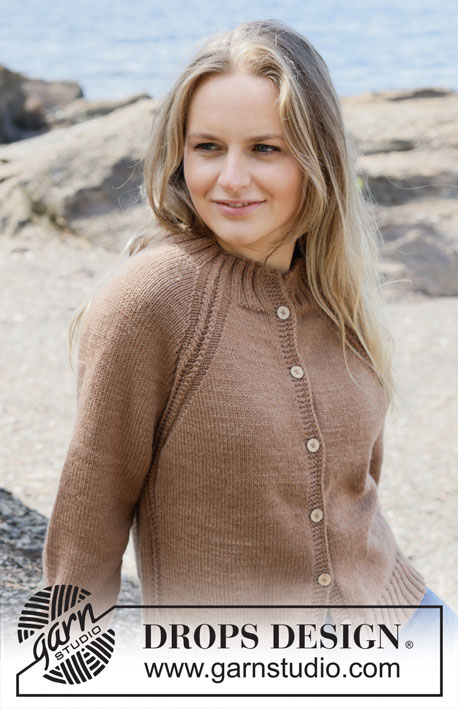 |
||||||||||||
Knitted jacket in DROPS Daisy or DROPS Fiesta. Piece is knitted top down with raglan, cables and i-cord. Size: S - XXXL
DROPS 255-22 |
|||||||||||||
|
---------------------------------------------------------- EXPLANATION FOR THE PATTERN: ---------------------------------------------------------- GARTER STITCH (when working back and forth): Knit on all rows, i.e. knit from right side and knit from wrong side. 1 ridge vertically = knit 2 rows. PATTERN: See diagrams A.1 and A.2. Diagrams show all rows in pattern seen from the right side. RAGLAN: Increase 1 stitch by making 1 yarn over, on next row work yarns over as explained below: BEFORE A.2: Purl yarn overs in back loop of stitches to avoid holes. Then work the new stitches in stocking stitch. AFTER A.2: Slip stitch off left needle and put it back on left needle but the opposite way (insert left needle in from behind when slipping it back on needle). Purl yarn overs in front loop of stitches to avoid holes. Then work the new stitches in stocking stitch. DECREASE TIP: Decrease 1 stitch on each side of marker thread as follows: Work until 3 stitches remain before marker thread and knit 2 together, knit 2 (marker thread is in the middle of these 2 stitches), slip 1 stitch knitwise, knit 1, pass slipped stitch over stitch worked (= 2 stitches decreased). BAND WITH I-CORD: BEGINNING OF ROW: Work band as follows: Slip 1 stitch purlwise with strand in front of piece, knit 1 and work 4 stitches in garter stitch. END OF ROW: Work band as follows: Work until 6 stitches remain on row, work 4 stitches in garter stitch, slip 1 stitch purlwise with strand in front of piece, knit 1. Work the same way both from right side and wrong side. BUTTONHOLES: Decrease for buttonholes on right band (when garment is worn). Decrease from right side when 5 stitches remain on row as follows: ROW 1 (= right side): Make 1 yarn over, knit 2 together, knit 1, slip 1 stitch purlwise with strand in front of piece, knit 1. ROW 2 (= wrong side): Work band as before and knit yarn over to make a buttonhole. Decrease for first buttonhole on first row from right side after neck edge has been worked. Then decrease the next 5-5-6-6-6-6 buttonholes, approx. 8-8½-7½-8-8-8½ cm apart. Place bottom buttonhole in the transition between stocking stitch and rib. ---------------------------------------------------------- START THE PIECE HERE: ---------------------------------------------------------- JACKET - SHORT OVERVIEW OF THE PIECE: In this pattern needles of different length have been used, begin with fitting length for number of stitches and switch as needed. Work neck edge and yoke back and forth on circular needle from mid front, work top down. When yoke is done, divide piece for body and sleeves. Work body downwards back and forth on circular needle while putting the sleeves aside. Then work sleeves downwards in the round on needle. NECK EDGE: Cast on 130-130-134-146-146-150 stitches on circular needle size 3 mm with DROPS Daisy or DROPS Fiesta. Purl 1 row from wrong side. Then work as follows from right side: 6 stitches BAND WITH I-CORD – read explanation above, * knit 2, purl 2 *, work from *-* over the next 8-8-8-12-12-12 stitches, knit 2, A.1 (= left front piece), * knit 2, purl 2 *, work from *-* over the next 20 stitches, knit 2 (= sleeve), A.1, * knit 2, purl 2 *, work from *-* over the next 16-16-20-24-24-28 stitches, knit 2, A.1 (= back piece), * knit 2, purl 2 *, work from *-* over the next 20 stitches, knit 2 (= sleeve), A.1, * knit 2, purl 2 *, work from *-* over the next 8-8-8-12-12-12 stitches, knit 2, 6 stitches band with i-cord (= right front piece). When A.1 has been worked 1 time vertically, continue with A.2 over stitches in A.1. Continue like this until neck edge measures 7 cm. Insert a maker on the inside of band in one side of piece, measure piece from this marker. YOKE: Switch to circular needle size 4 mm. Continue with pattern A.2 and band stitches as before, and work stocking stitch over stitches on sleeve, front pieces and back piece - AT THE SAME TIME on first row begin increases for RAGLAN and decrease for BUTTONHOLES - read explanation above. INCREASE AS FOLLOWS: ROW 1 (= right side): Increase by making a yarn over before and after every A.2 (= 8 stitches increased). ROW 2 (= wrong side): Work pattern as before, work the new stitches in stocking stitch (remember to twist yarn overs as explained above). Work 1st and 2nd row 7-6-10-15-11-10 times (= 14-12-20-30-22-20 rows have been worked) = 186-178-214-266-234-230 stitches on needle. Remember to follow the knitting tension! Continue with stocking stitch, band and A.2 as before, and increase for raglan as follows: ROW 1 (= right side): Increase by making a yarn over before and after every A.2 (= 8 stitches increased) ROW 2 (= wrong side): Work pattern as before, work the new stitches in stocking stitch. ROW 3 (= right side): Increase by making a yarn over before 1st repetition of A.2, after 2nd repetition of A.2, before 3rd repetition of A.2 and after 4th repetition of A.2 i.e. increase only on front pieces and back piece, do not increase on sleeves (= 4 stitches increased). ROW 4 (= wrong side): Work pattern as before, work the new stitches in stocking stitch. Work 1st to 4th row 13-16-14-13-17-20 times (= 52-64-56-52-68-80 rows have been worked, and you have increased 13-16-14-13-17-20 times on sleeves and 26-32-28-26-34-40 times on front pieces/back piece) = 342-370-326-422-438-470 stitches on needle. All increases for raglan are done, you have increased a total of 33-38-38-41-45-50 times on front pieces/back piece and 20-22-24-28-28-30 times on sleeves. Work stocking stitch and A.2 and band as before, without increasing, until piece measures approx. 24-28-30-30-32-36 cm from marker mid front. Now divide yoke for body and sleeves. DIVIDING FOR BODY AND SLEEVES: AT THE SAME TIME as next row is worked divide yoke for body and sleeves as follows: Work 58-63-63-70-74-79 stitches as before (= front piece), slip the next 62-66-70-78-78-82 stitches on a thread for sleeve, cast on 6-6-10-10-14-14 new stitches on needle (= in the side mid under sleeve), work 102-112-116-126-134-148 stitches as before (= back piece), slip the next 62-66-70-78-78-82 stitches on a thread for sleeve, cast on 6-6-10-10-14-14 new stitches on needle (= in the side mid under sleeve), and work the last 58-63-63-70-74-79 stitches as before (= front piece). Finish body and sleeves separately. BODY: = 230-250-262-286-310-334 stitches. Work in stocking stitch, A.2 and band as before until piece measures 43-45-47-49-51-53 cm from marker mid front. Work 1 row from wrong side while at the same time increasing stitches evenly as follows: Increase 6-5-7-4-6-9 stitches on each front piece (between band stitches and A.2) and increase 10-12-12-14-14-16 stitches on back piece (increase between A.2) = 252-272-288-308-336-368 stitches. Switch to circular needle size 3 mm. Work rib as follows – first row is worked from right side: 6 band stitches as before, * knit 2, purl 2 *, work from *-* until 2 stitches remain before A.2, knit 2, A.1 over stitches in A.2, * knit 2, purl 2 *, work from *-* over the next 4-4-8-8-12-12 stitches, knit 2, A.1 over stitches in A.2, knit 2, purl 2 *, work from *-* until 2 stitches remain before A.2, knit 2, A.1 over stitches in A.2, * knit 2, purl 2 *, work from *-* over the next 4-4-8-8-12-12 stitches, knit 2, A.1 over stitches in A.2, * knit 2, purl 2 *, work from *-* until 2 stitches remain before band stitches, knit 2, 6 band stitches as before. Work like this for 6 cm. Jacket measures 49-51-53-55-57-59 cm from marker mid front and approx. 54-56-58-60-62-64 cm from the top of shoulder. SLEEVES: Slip 62-66-70-78-78-82 sleeve stitches from one thread on to circular needle size 4 mm and pick in addition up 1 stitch in each of the 6-6-10-10-14-14 stitches cast on under sleeve = 68-72-80-88-92-96 stitches. Insert 1 marker thread in the middle of the 6-6-10-10-14-14 new stitches under sleeve - round begins at the marker thread. Work in stocking stitch in the round on needle - AT THE SAME TIME when sleeve measures 3 cm from division, decrease mid under sleeve – read DECREASE TIP and decrease as follows: Decrease 2 stitches every 6½-5-3½-2½-2-1½ cm 5-6-8-11-12-13 times in total = 58-60-64-66-68-70 stitches. Work until sleeve measures 37-34-33-32-31-28 cm from division. Switch to double pointed needles size 3 mm and work rib (= knit 2/purl 2) while AT THE SAME TIME increasing 6-8-4-6-4-6 stitches evenly on 1st round = 64-68-68-72-72-76 stitches. When piece measures 6 cm cast off. Sleeve measures approx. 43-40-39-38-37-34 cm from division. ASSEMBLY: Sew buttons on to left front piece. |
|||||||||||||
Diagram explanations |
|||||||||||||
|
|||||||||||||
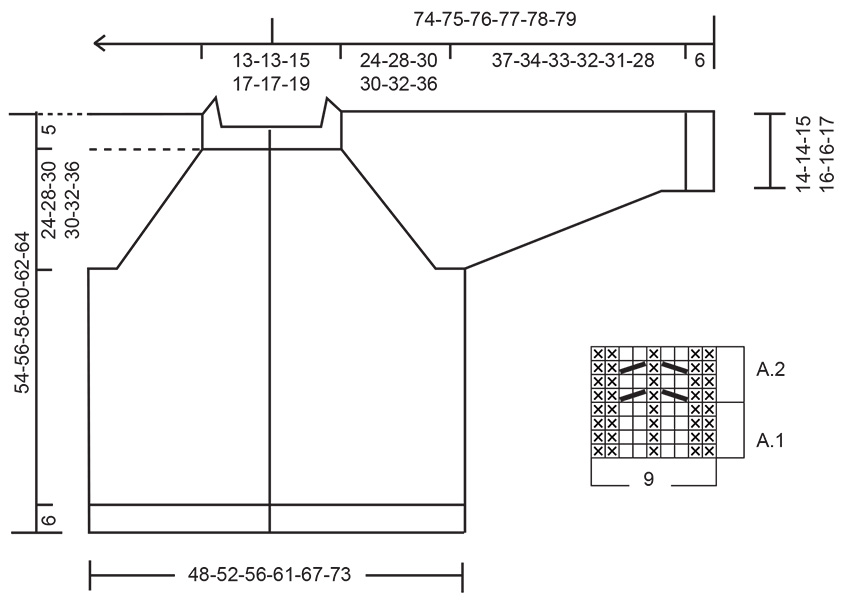 |
|||||||||||||
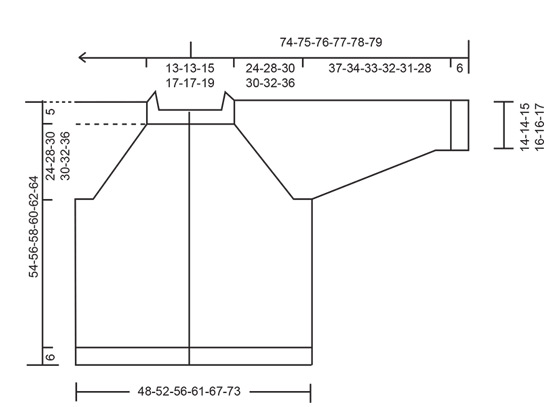 |
|||||||||||||
Have you finished this pattern?Tag your pictures with #dropspattern #undertheoakcardigan or submit them to the #dropsfan gallery. Do you need help with this pattern?You'll find 32 tutorial videos, a Comments/Questions area and more by visiting the pattern on garnstudio.com. © 1982-2025 DROPS Design A/S. We reserve all rights. This document, including all its sub-sections, has copyrights. Read more about what you can do with our patterns at the bottom of each pattern on our site. |
|||||||||||||







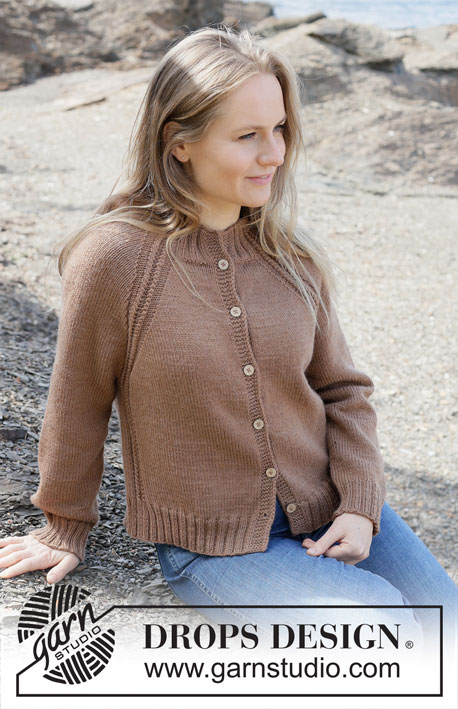
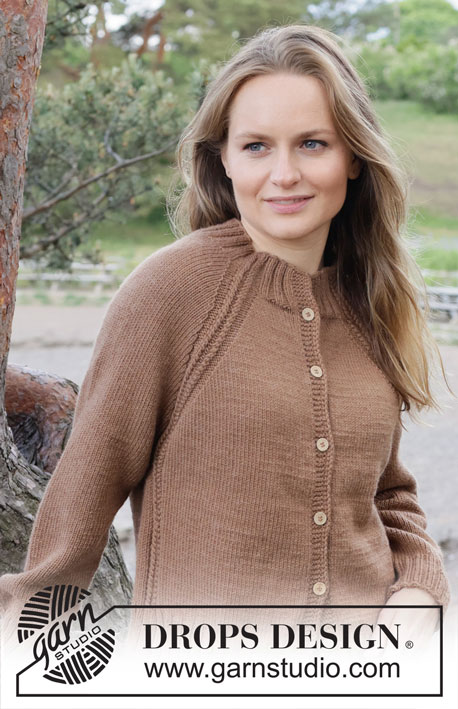
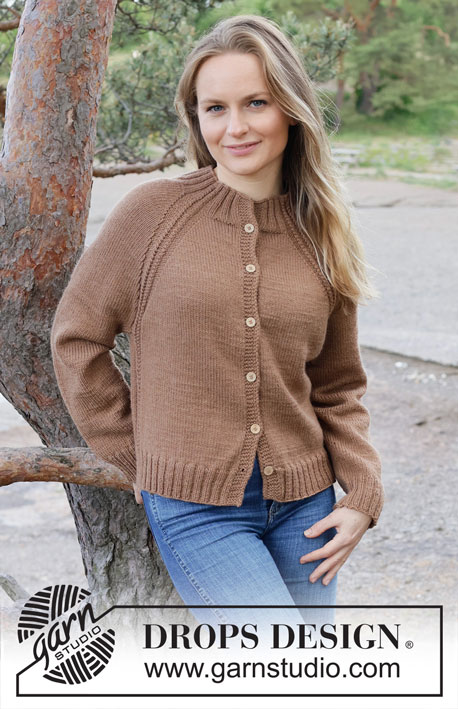

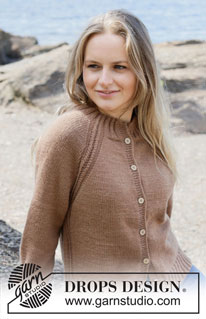
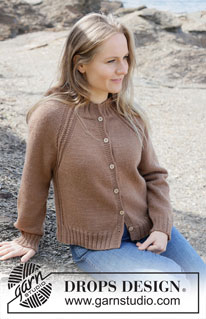
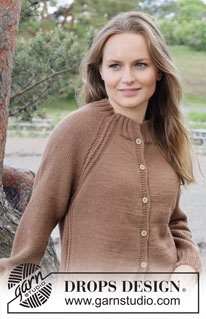
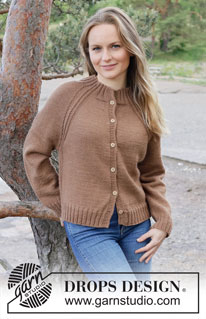
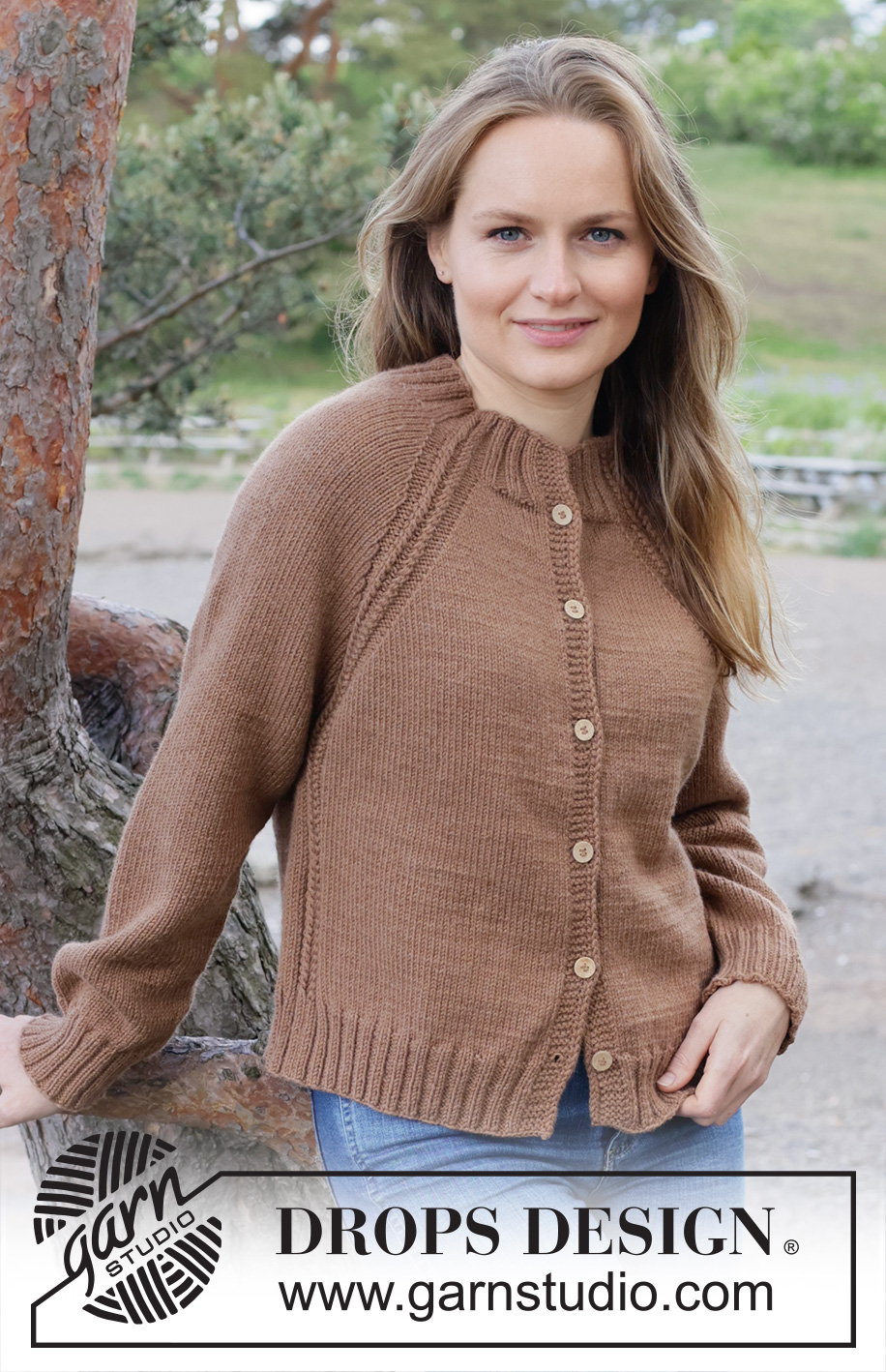
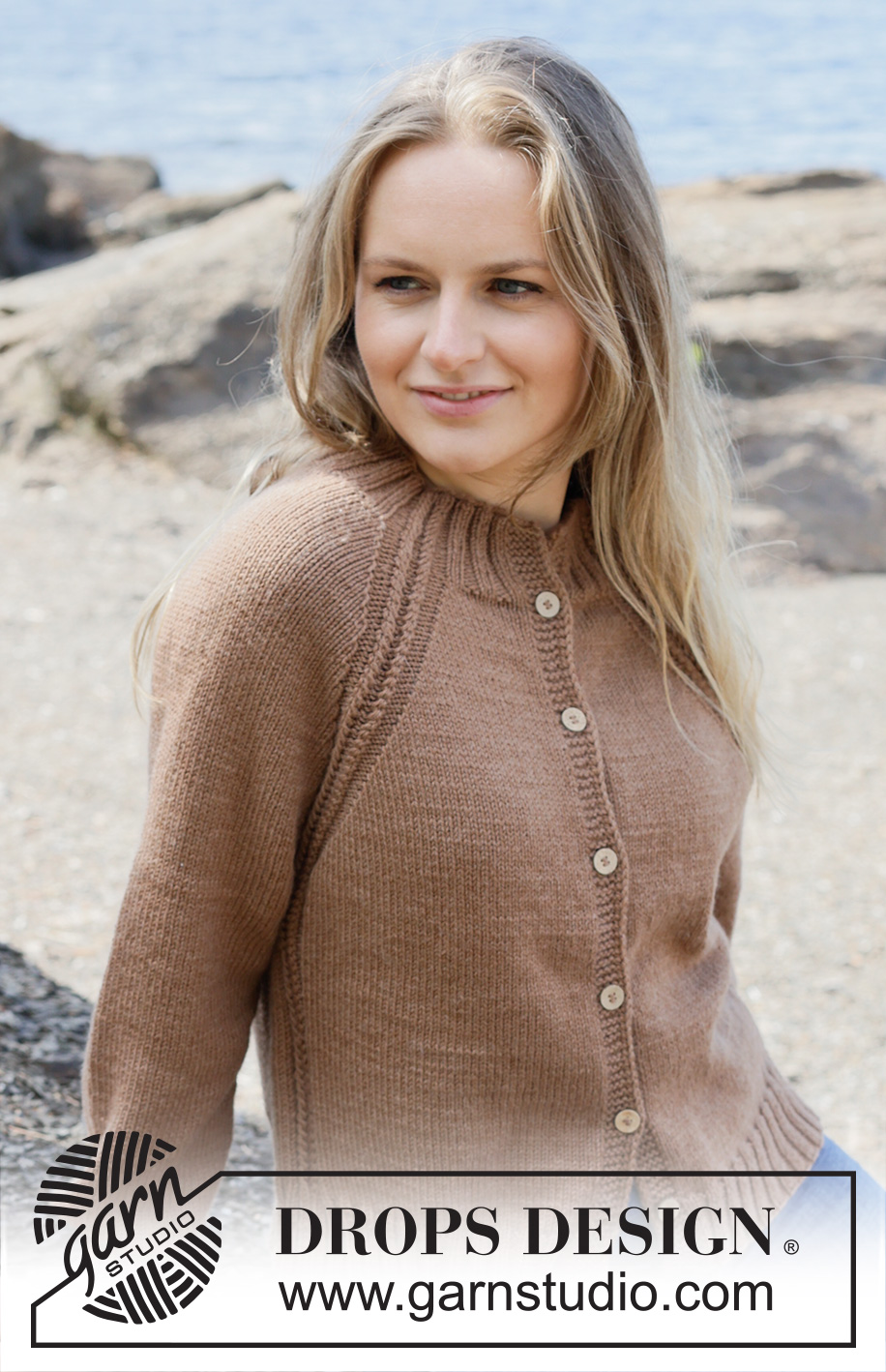
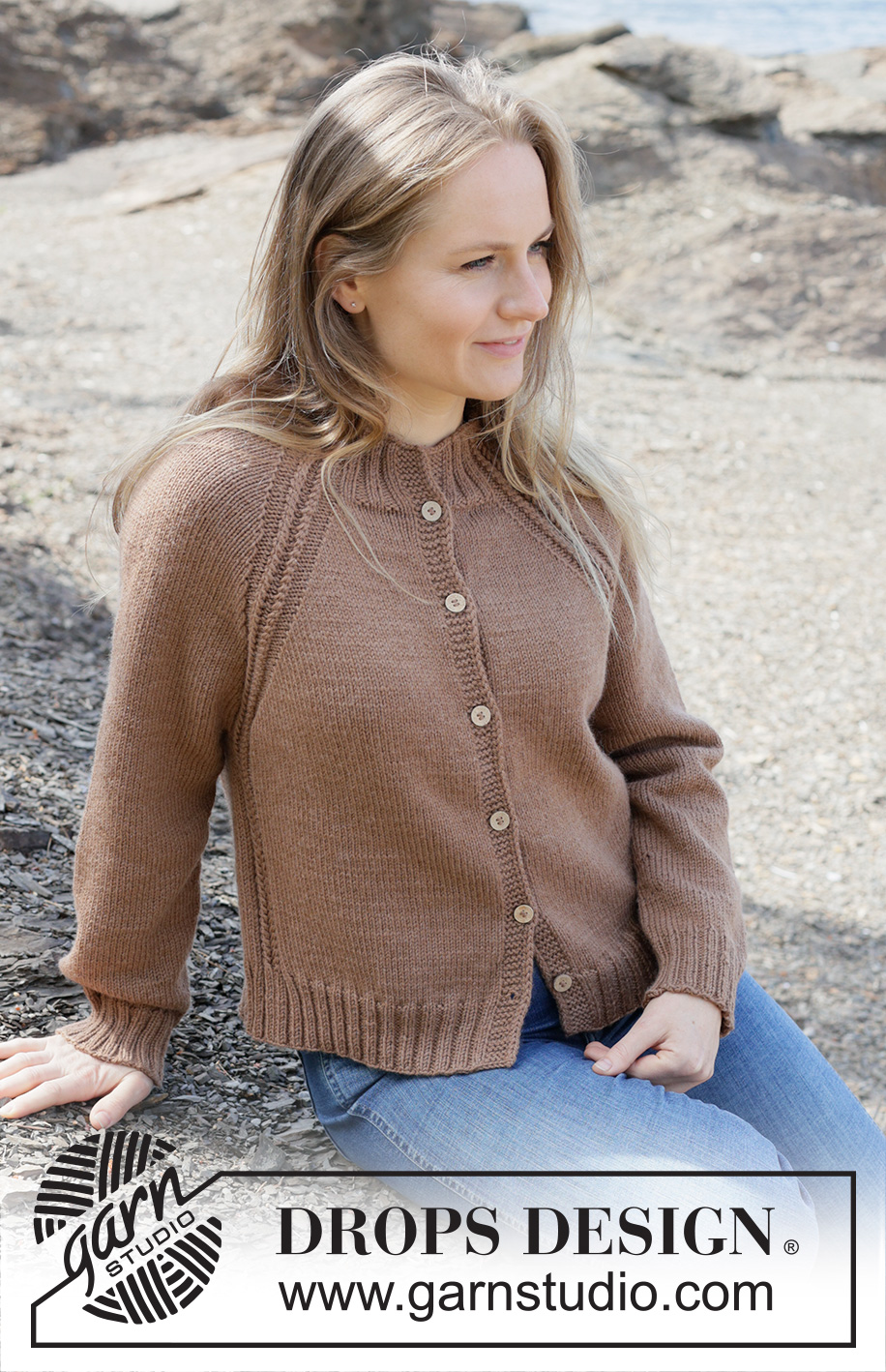
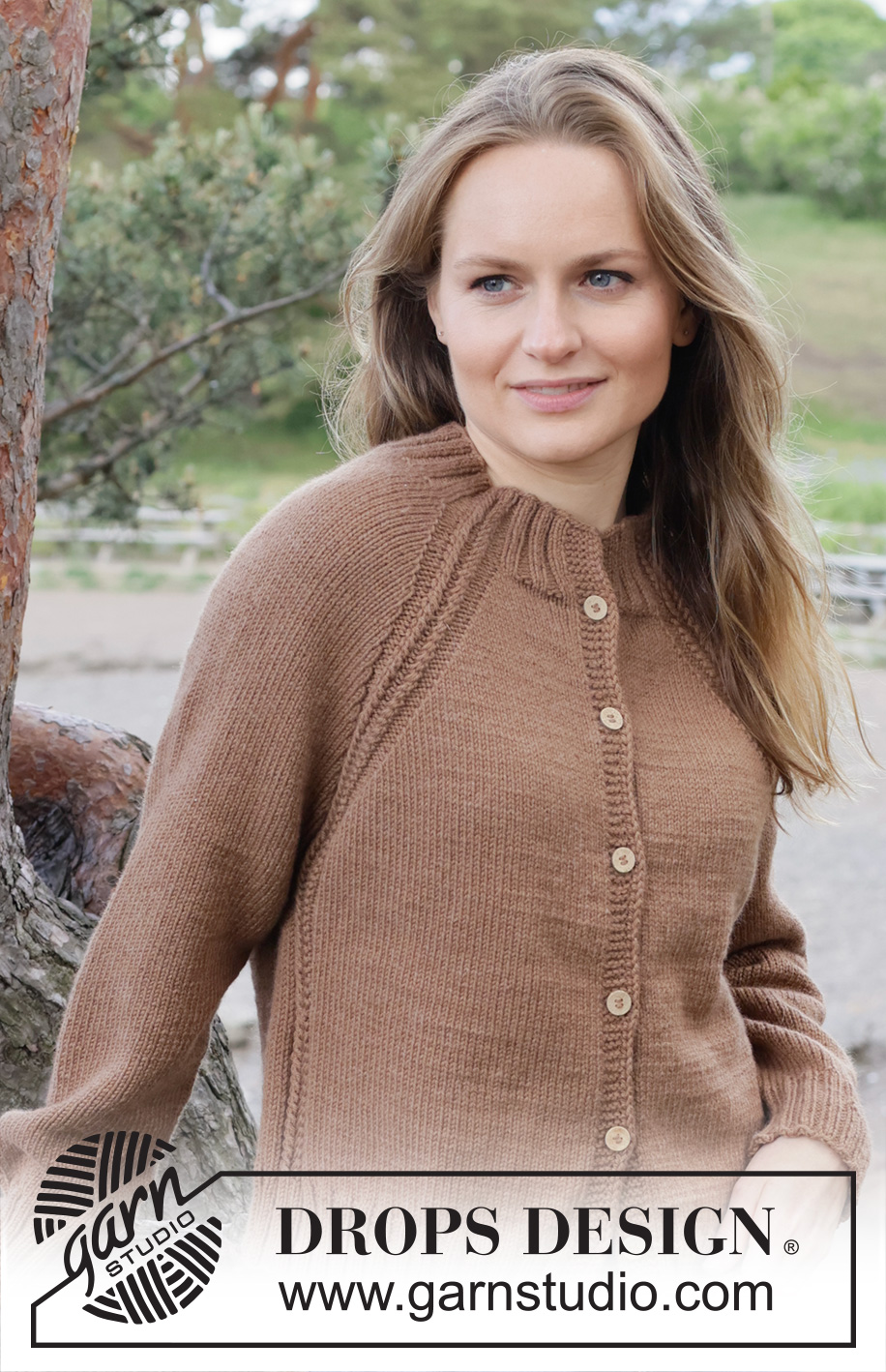
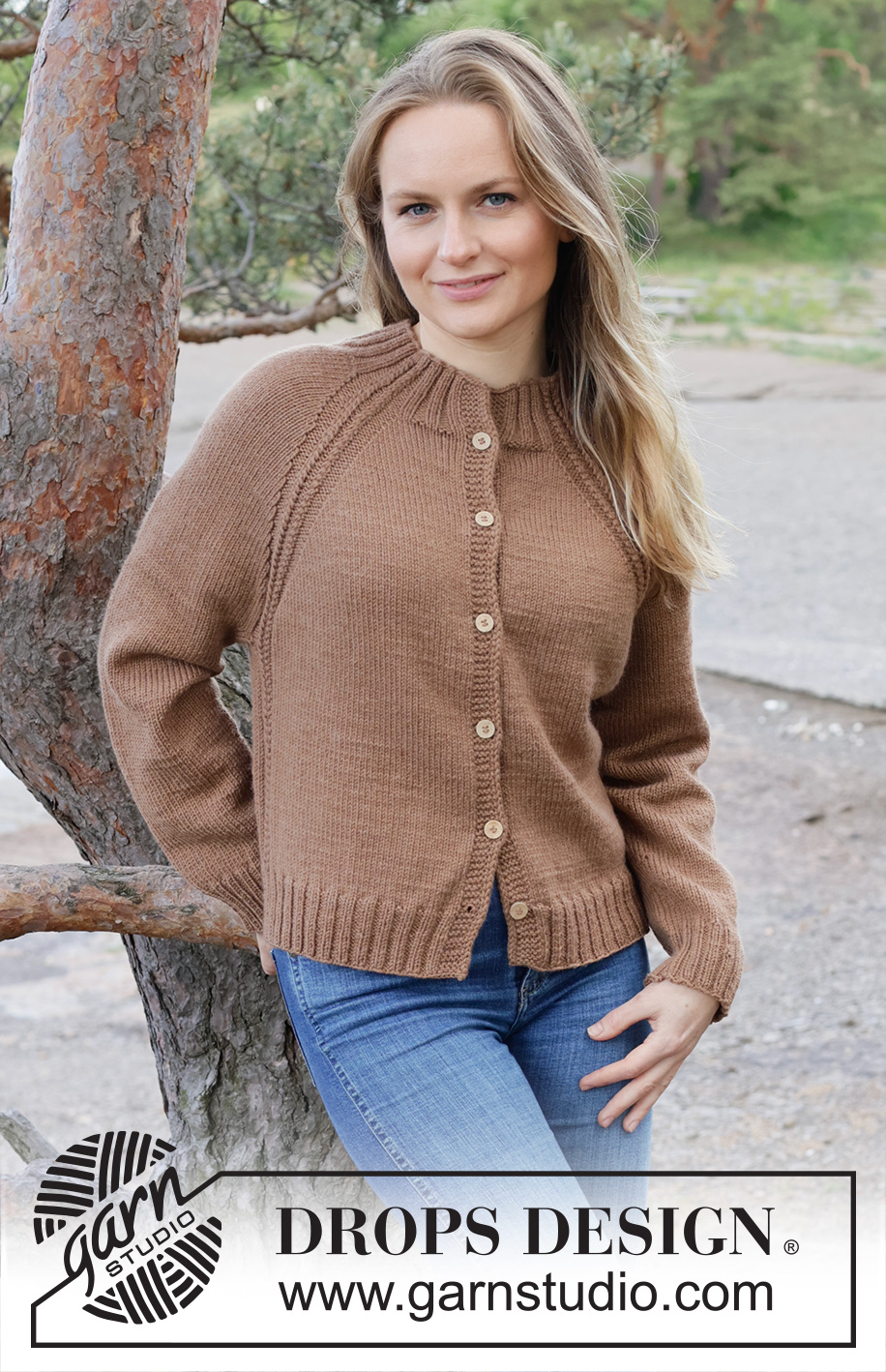
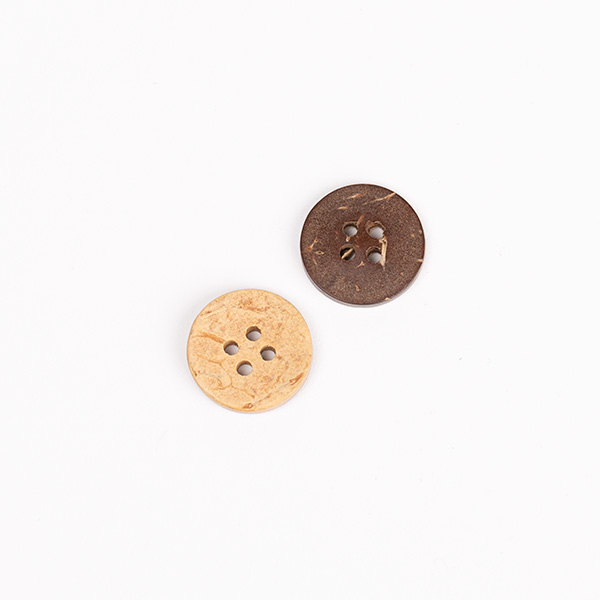
































































Post a comment to pattern DROPS 255-22
We would love to hear what you have to say about this pattern!
If you want to leave a question, please make sure you select the correct category in the form below, to speed up the answering process. Required fields are marked *.